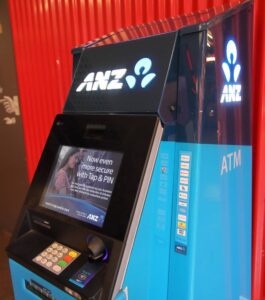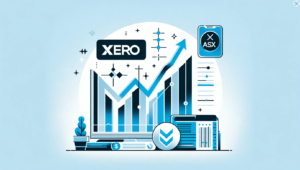Xero topped the ASX 200 today as the Kiwi-software company moved back into profitability. Is now the time to buy?
Fintech News: Exploring Innovations in Financial Technology
Fintech – short for financial – is a broad term applied to firms that combine innovative business models and technology to disrupt traditional financial services.
Australia has positioned itself as one of the sector’s hubs, with over 800 fintech companies based here.
Indeed, the Australian fintech industry grew from an estimated $250 million industry in 2015 to a $4 billion industry by 2020.
Fintech ASX Industry
The fintech industry is no longer a niche sector bubbling with small startups.
Today, it is host to bustling newcomers and mature companies alike, all offering broad financial services.
According to research from EY, adoption of fintech services rose from 16% in 2015, to 33% in 2017, to 64% in 2019.
Worldwide, 96% of consumers know of at least one alternative financial technology service available to help them transfer money and make payments.
But what about Australia, specifically?
The Australian Government’s Select Committee on Financial Technology and Regulatory Technology released a report in 2020 on the fintech landscape in Australia.
The committee found that:
‘Australia has a vibrant and growing FinTech sector, with a significant number of startups and early stage ventures as well as several established unicorns that clearly show the incredible potential of this sector of the economy.
‘FinTech has the potential to revolutionise financial services in Australia, increasing competition in the sector and providing better outcomes for consumers.’
According to FinTech Australia, about 70% of Australian fintechs provide services directly to businesses.
FinTech Australia says that, typically, these fintech firms have a better understanding of the needs of business owners compared to traditional financial institutions, allowing them to fill market gaps.
For instance, some fintech firms have improved lending outcomes for small businesses, while others have cut the time it takes for businesses to be paid for their products.
As for Australian retail consumers, Aussie fintechs offer innovative products more tailored to consumer needs by leveraging big data and digitisation.
This can often mean fintechs offer services that are quicker and cheaper.
And having cheaper prices is becoming increasingly important for the sector.
EY found that, in 2017, ease of opening an account was the top priority when considering a fintech company.
In 2021, it’s all about price. EY reported that, for Australian consumers, competitive fees and rates are way ahead of the next most common reasons – ease of onboarding and access to innovative features.
Today in Fintech Industry News: Key Shifts in Digital Finance
What is considered a fintech?
Fintech is a broad term whose definition is porous enough to admit plenty of companies.
Technology is becoming more and more integral to how we and businesses transact and operate.
So it can be tricky to delineate between a traditional firm incorporating new technology and a dedicated fintech with technology as its core offering.
While we can colloquially refer to Afterpay as ‘a fintech’, we can also say that, for instance, the traditional stalwart Commonwealth Bank is adopting fintech – or financial technology.
For instance, in March 2021, CBA announced it will launch its own BNPL offering. So, many companies can use financial technology without necessarily being classified as fintech stocks.
This, of course, can muddy the waters.
Indeed, EY’s 2019 Global FinTech Adoption Index report noted that ‘many financial incumbents, such as banks and insurers, offer credible FinTech propositions of their own, challenging the question of what is a “FinTech”’.
So it’s useful to note that many established players – like the big four banks – have responded to demand by developing their own digital products that compete with those offered by fintech challengers.
But, what makes a stock a fintech?
There are three main types:
- Companies providing a direct service to customers that is effectively in competition or opposition to incumbent banks.
- Companies providing a service directly to the banks.
- Companies facilitating the wider financial ecosystem, such as intermediaries, general payment providers, and generic software platforms.
You can also classify a fintech company by evaluating whether its technology is disrupting a service or inventing a service.
A disrupted service is one that was historically run by traditional players, services like automotive insurance and foreign exchange trading.
Fintech stocks disrupt these markets by leveraging their technology to offer a more compelling service – be that enhanced capabilities, convenience, or lower fees.
An invented service is – you’re likely ahead of me here – one that didn’t exist before but whose existence was made possible by new technology and/or new business models.
Some examples are peer-to-peer lending, blockchain, and mobile-phone payments.
So, how would we go about finding Australian fintechs?
Thankfully, KPMG released a report with a snapshot of the Australian fintech landscape as of December 2020.
This snapshot identified all Australian fintech stocks and classified them under subcategories like neobank, regtech, insurtech, lending, payments, wealthtech, and blockchain.
Fintech Startups
2020 was a big year for Australian fintech startups, with more than 100 fintech companies joining the fray.
According to KPMG KPMG’s 2020 Fintech Landscape report, there is now an increased number of fintechs entering the lending category – both consumer and small and medium enterprise (SME) lending.
Unsurprisingly, the popularity of cryptocurrencies is propelling growth in blockchain and crypto associated fintech startups.
And the open banking regime that began in July 2020 has turbocharged the evolution of the neobank sector.
For reference, the open banking regime allows any Big Four bank customer to request their account and card data be sent to a third party accredited by the Australian Competition and Consumer Commission.
A customer’s mortgage and personal loan data was added to the regime in November 2020.
Looking to 2021 and beyond, KPMG anticipates more investments in banking-as-a-service models, insurtech, and wealthtech.
Market Dynamics: Fin-Tech Stocks
We’ve all heard of Afterpay Ltd [ASX:APT]– the darling of Australia’s fintech industry. Since listing on the ASX in 2016, Afterpay has gained over 3,800%.
Such impressive returns highlight the explosive potential of financial technology.
But it must be said that Afterpay is not a typical case: it was founded just as the BNPL boom was taking off and quickly became the market leader in Australia.
By June 2021, it commanded 65% of the Aussie market.
That said, the BNPL sector is not constituted by one big winner and many losers. The sector continues to grow and throw up success stories.
For example, APT’s main rival – Zip Co Ltd [ASX:Z1P] – has gained over 900% since 2016.
Some of the lesser discussed BNPL fintechs have performed well, too.
Since listed in 2019, Sezzle Inc [ASX:SZL] gained over 250%.
But, as I’ve said, we shouldn’t equate the fintech industry solely with BNPL. After all, financial technology has applications beyond payment instalments.
Here are some non-BNPL fintech companies:
- Wisr Ltd [ASX:WZR] – a non-bank lender offering consumer lending services. Over five years to June 2021, Wisr gained 550%.
- EML Payments Ltd [ASX:EML] – a payment technology company issuing mobile, virtual, and physical card solutions. Over five years to June 2021, EML gained 185%.
- Pushpay Holdings Ltd [ASX:PPH] – a donor and church management fintech offering financial tools to the faith and non-profit organisations. Over the five years to June 2021, Pushpay is up over 200%.
Now, a word on risk.
The companies discussed here are in no way recommendations. They’re merely a starting point for your own research.
Fintechs, and especially small-cap fintechs, are more volatile than their large-cap peers and potentially carry greater risk.
So never invest more than you can afford and speak to a financial adviser if you don’t know what’s right for you.

Openpay and Sezzle Shares Fall on Trading Updates
ASX BNPL stocks Openpay Group [ASX:OPY] and Sezzle Inc [ASX:SZL] both fell on Tuesday after releasing trading updates.

The Way We Pay Is Changing in 2022
While cash is trending down, electronic payments are trending up. Debit payments, especially, are the preferred option to credit.

ANZ Shares Dragged 2.5% Lower as Lending Market Tightens (ASX:ANZ)
The smallest of the Big Four banks, Australia and New Zealand Banking Group [ASX:ANZ], is having a rough patch today.

Big Tech Is Dead, Long Live Big Tech!
By Ryan Dinse,
As the name suggests, an adoption curve is the process by which a new technology is taken up by the public at large.

Cettire Shares Hammered by 20% Thanks to Earnings Miss (ASX:CTT)
Online fashion retailer Cettire (ASX:CTT) is getting rinsed on the ASX boards today. The small-cap is trading 21.36% lower at the time of writing. It’s enduring a massive sell-off as investors revolt against the company’s latest earnings.
- Page 1
- Page 2
- Page 3
- Interim pages omitted …
- Page 42
- Go to Next Page »
